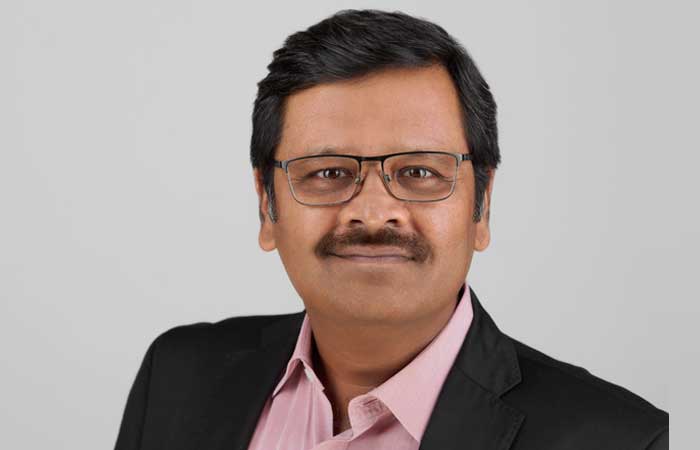
Combating counterfeiting requires a multi-faceted approach
The Authentication Solution Providers’ Association (ASPA) is the world’s first and only self-regulated non-profit organisation that represents the entire as physical and digital authentication solutions industry globally. Founded in 1998, ASPA works towards creating awareness around the importance of physical and digital authentication solutions for brand, document, and revenue protection as well as consumer empowerment. The organisation endeavours to educate stakeholders including Government authorities, brand owners, industry & consumers about how combination of technology solutions ensures authenticity of various products. While generating greater awareness in companies on how adopting physical and digital authentication solutions authentication solutions can facilitate brand protection and reduce loss of revenue on this account. Manoj Kochar, President, Authentication Solution Providers’ Association (ASPA), shares how counterfeiting is a big issue In the industry and how his association is helping in mitigating this.
Could you please provide us with a brief overview of the Authentication Solution Providers’ Association (ASPA) and the role played by it in the Indian textiles & apparels space?
In the Indian textiles and apparel space, ASPA contributes by fostering the adoption of authentication technologies that protect against counterfeiting and ensure product authenticity, safeguarding both brands and consumers. Its efforts help enhance transparency and trust across the supply chain, ensuring the integrity of textile products in the market.
Is the problem of counterfeiting really big in the Indian textiles & apparel (T&A) industry? How counterfeiters operate in the T&A space?
Counterfeiting poses a significant challenge to the Indian textiles and apparel (T&A) industry, with an estimated 30-40 per cent of the market affected, according to the ASPA & CRISIL 2023 Report. The apparel sector is particularly vulnerable because counterfeiters can easily replicate the look and feel of popular, expensive brands and sell them at a fraction of the price. These counterfeit products are typically low-quality imitations that capitalise on the high demand for branded apparel and the perception that buying counterfeits poses minimal harm.
This not only results in substantial revenue losses for authentic brands but also exposes consumers to potential health and safety risks from using substandard products. Addressing this pervasive issue requires a comprehensive strategy, including stricter enforcement of intellectual property rights, raising consumer awareness about the risks of counterfeits, and fostering collaboration between brands, retailers, and policymakers to build a more secure and transparent marketplace.
Are brand-owners of T&A aware of the gravity of counterfeit problems in India?
Brand-owners in the textiles and apparel (T&A) industry are well aware of the gravity of the counterfeit problem in India. The unorganised segment, as per the ASPA & CRISIL 2023 report contributes to nearly 60 per cent of the ready-made garments market, is a major source of cheap replicas and good first copies of branded products that are difficult to distinguish from the originals.
Compounding the issue is the fact that many consumers, especially those aged 20-30, are willing to knowingly purchase counterfeit products due to price sensitivity, availability of similar options at lower costs, and the desire to keep up with the latest fashion trends. These consumers believe that counterfeiting is acceptable as long as it does not adversely impact their health or well-being, further fueling the demand for fake branded items.
The prevalence of counterfeit products sold through e-commerce platforms and reseller channels has made it increasingly challenging for brand-owners to protect their intellectual property and maintain the integrity of their brands. Addressing this multifaceted problem will require a collaborative effort involving stricter enforcement, consumer education, and a crackdown on the unorganised segment that enables the counterfeit trade.
What measures can T&A companies and consumers take to combat the growing threat of counterfeits and substandard products?
To combat the growing threat of counterfeits and substandard products, T&A companies and consumers must adopt a multifaceted approach. Companies should work closely with industry bodies like ASPA to implement strong anti-counterfeiting measures, such as advanced authentication technologies and regular audits. They must also educate their supply chain and stakeholders on recognising counterfeit products and report any suspicious activities to authorities.
Consumers, on the other hand, should stay informed and vigilant. Awareness campaigns and educational initiatives, such as webinars and seminars organised by ASPA, play a crucial role in educating the public on how to identify counterfeit goods. Governments should also strengthen regulations and enforce strict consumer protection laws to create significant legal deterrents against counterfeiters. By fostering collaboration among industry players, government bodies, and consumers, a comprehensive barrier against counterfeiting can be established, ensuring a safer and more transparent marketplace.
How can modern technologies be useful tools to reduce the menace of counterfeits?
Combating the growing threat of counterfeiting requires a multi-faceted approach that leverages the power of modern technologies. Blockchain, RFID, holograms, and ISO 22383 have emerged as vital tools in enhancing product authentication and supply chain transparency.
Blockchain technology offers a decentralised and immutable ledger, enabling all stakeholders to track a product’s journey from production to the end consumer. This transparency makes it difficult for counterfeiters to introduce fake products into the supply chain. RFID (Radio-Frequency Identification) technology allows for real-time tracking and identification of products, providing an additional layer of security. When combined with Blockchain, it enables seamless verification and ensures authenticity throughout the supply chain. Holograms, on the other hand, offer a physical security feature that is difficult to replicate, making them an effective deterrent against counterfeiting. ISO 22383 provides a standard for security measures against counterfeiting, guiding companies on implementing advanced technologies and practices to protect products.
By integrating these digital authentication methods—such as QR codes, NFC tags, and holograms—with physical measures, brands can create a robust, multi-layered defense against counterfeiting. ISO 22383 also helps companies evaluate the effectiveness of their authentication solutions, ensuring they are fit for purpose. By adopting these innovative solutions, brands can secure their products, protect consumer trust, and enhance overall brand integrity.



